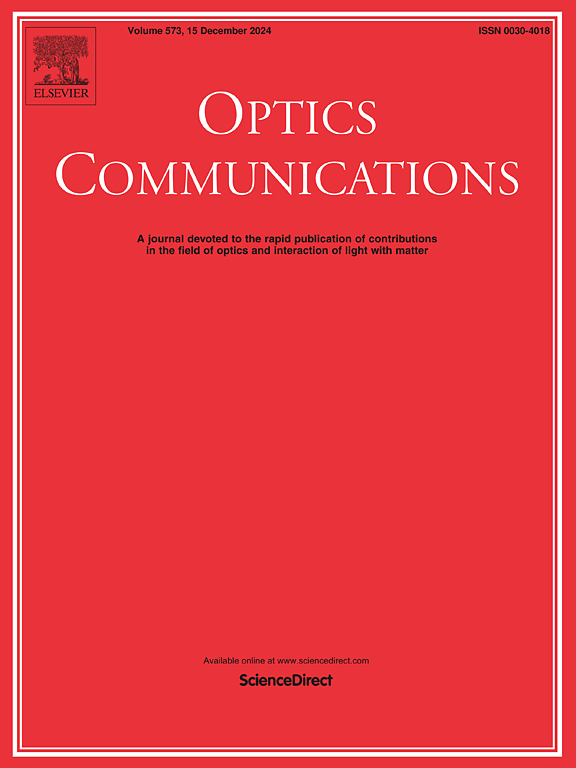减少硅上单片生长的室温连续波 InGaAs/AlGaAs 多量子阱激光器的位错
IF 2.5
3区 物理与天体物理
Q2 OPTICS
引用次数: 0
摘要
作为对位错敏感的发光器件,在硅衬底上单片生长的量子阱激光器与在原生衬底上生长的量子阱激光器相比,工作性能较差。在这项工作中,通过使用联合位错减少方法,实现了穿线位错密度低至 8.9 × 106/cm2 的砷化镓/硅虚拟衬底。同时,通过在上下 AlGaAs 包层中分别插入两个含 In 的应变层,有源区几乎不存在滑动位错。随着有源区位错的减少,制备出的硅基宽条纹脊状激光器在室温下表现出连续波激光,并实现了 1015 A/cm2 的低阈值电流密度、90 ℃ 的高工作温度以及超过 87.25 h 的器件寿命。这些结果证明了优化硅基 InGaAs/AlGaAs 量子阱激光器的实验可行性,并进一步推动了单片集成的研究。本文章由计算机程序翻译,如有差异,请以英文原文为准。
Reducing dislocations for room-temperature continuous-wave InGaAs/AlGaAs multiple quantum well lasers monolithically grown on Si
As dislocation-sensitive light-emitting devices, quantum well lasers monolithically grown on Si substrates operate poorly compared to their counterparts on native ones. In this work, a GaAs/Si virtual substrate with a low threading dislocation density of 8.9 × 106/cm2 was achieved by using a combined dislocation-reducing method. Meanwhile, by using two In-containing strained layer separately inserted into upper and lower AlGaAs cladding layers, the active region was virtually free of gliding dislocations. With the reduced dislocations in the active region, the fabricated Si-based broad-stripe ridged lasers exhibited continuous-wave lasing at room temperature, and a low threshold current density of 1015 A/cm2, high operation temperature of 90 °C as well as a device lifetime of over 87.25 h were achieved. These results demonstrate an experimentally feasible way to optimize a Si-based InGaAs/AlGaAs quantum well laser and further promote the research on monolithic integration.
求助全文
通过发布文献求助,成功后即可免费获取论文全文。
去求助
来源期刊

Optics Communications
物理-光学
CiteScore
5.10
自引率
8.30%
发文量
681
审稿时长
38 days
期刊介绍:
Optics Communications invites original and timely contributions containing new results in various fields of optics and photonics. The journal considers theoretical and experimental research in areas ranging from the fundamental properties of light to technological applications. Topics covered include classical and quantum optics, optical physics and light-matter interactions, lasers, imaging, guided-wave optics and optical information processing. Manuscripts should offer clear evidence of novelty and significance. Papers concentrating on mathematical and computational issues, with limited connection to optics, are not suitable for publication in the Journal. Similarly, small technical advances, or papers concerned only with engineering applications or issues of materials science fall outside the journal scope.
 求助内容:
求助内容: 应助结果提醒方式:
应助结果提醒方式:


